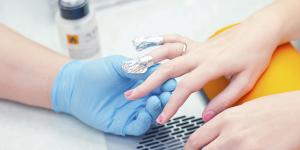Side Effects of Using Baking Soda on Skin


Home remedies are great to take care of your skin. They are easily available, and are safe too. But this applies only to natural products and ingredients. When it comes to using baking soda on skin, it is a popular but unsafe method of skin care at home. Although Baking Soda is known to improve complexion and help with blemishes and acne, it is not safe for your skin in the long run. One important reason for this is that it is not a natural products, but a chemical. Here at oneHOWTO, let’s have a look at the side effects of using baking soda on skin.
Myths about using baking soda on skin
Some people apply baking soda on their face when they have acne with hope to improve it, but in reality, acne prone skin is already angry and raw, and applying baking soda on it can actually prove more damage to it than good. Some may recommend balancing the pH level by mixing lemon juice and baking soda together, but you will need a litmus paper to check whether you mixed it well or not. Just mixing them randomly is not enough. Although baking soda has antiseptic, anti-fungal and antibacterial properties, it is good to clean your countertops and toilets, but not your skin. It is too harsh for human skin and cause a lot of damage to it, even with a single use. The instant improvement in the complexion that you notice is due to the unclogged pores it creates, due to which your skin becomes more susceptible to surrounding elements.
Baking soda is a chemical
When we use home remedies on our skin, we are intrigued by the thought that it is 100% natural and free of chemicals. But although baking soda is a home ingredient which is available in almost all households, it is nothing but chemical. For your information, its chemical name is sodium bicarbonate and its chemical formula is NaHCO₃. So, baking soda is nothing but a chemical. Therefore, since it is a chemical, you have an obvious reason to not use it on your skin.

How baking soda damages skin
Human skin is acidic, and its pH level falls between 4 and 5. The pH level of baking soda is 9, while water is neutral with A pH of 7. The acidic layer of the skin is designed to keep it protected against pollution, damage and bacteria. It does not allow moisture of the skin to evaporate, thus keeping it healthy and moisturized. But when you apply baking soda on it, it destroys the acidic layer completely, thus stripping your skin off all the moisture and oil trapped in it.
Side effects of using baking soda on skin
Some of the side effects that you would notice on your skin after using baking soda include:
- Your skin is left raw.
- It becomes welcoming to the elements, allowing pollution and bacteria to cause damage to your precious skin.
- It becomes more sensitive when exposed to the sun, sometimes creating sun marks and patches on your skin.
- You may notice more acne breakouts.
- Your skin seems to be red and inflamed.
- You start developing visible scars and black spots on your skin with regular use of baking soda.
Alternatives to baking soda for skin
If you are looking for easily available home remedies for your skin, then instead of baking soda, you have other healthier alternatives too, such as cornmeal, sugar, pumpkin seeds, oats, coffee grinds, gram flour and sugar. All of them are natural ingredients that can be applied on skin to gain visible effects within the first few uses.
Giving a nice massage to your skin with ice cubes is a sure-shot way of getting instant glow and improving complexion. Mix one tbsp of gram flour in one tbsp of raw milk, and apply it on your face evenly. Let it stay for 15 minutes and then wash off. Doing this regularly is an effective remedy to improve complexion and texture of your skin.

If you want to read similar articles to Side Effects of Using Baking Soda on Skin, we recommend you visit our Beauty & Personal Care category.






